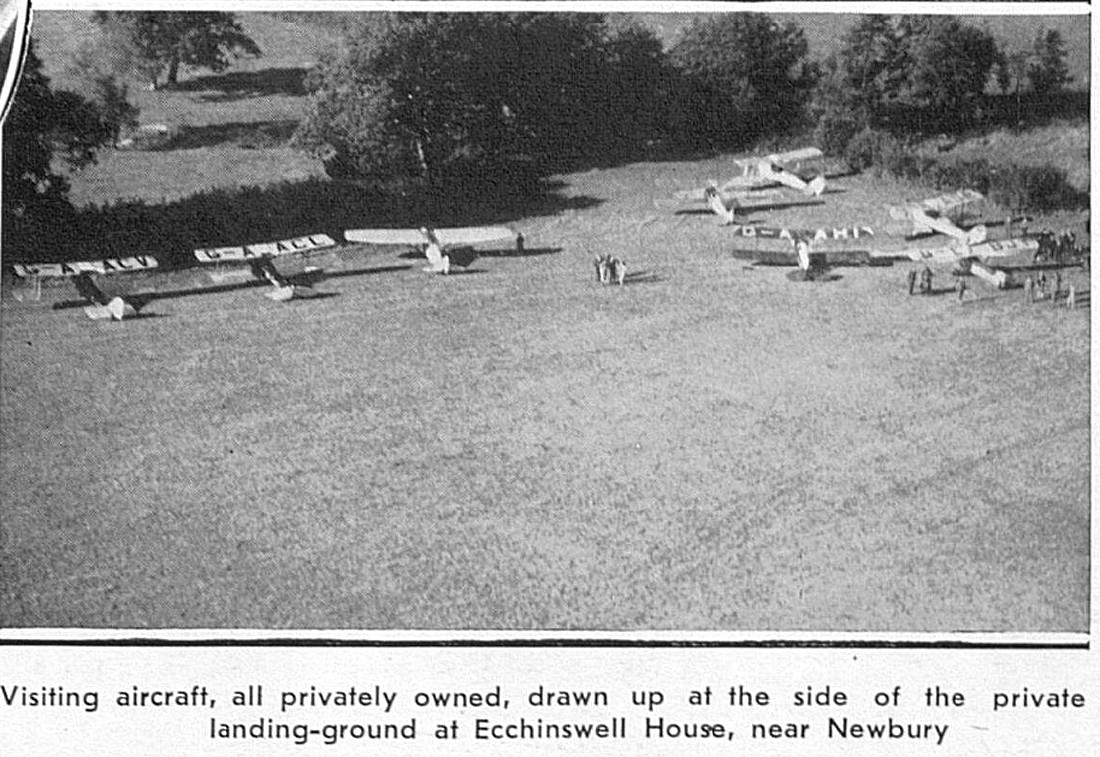Ecchinswell House
ECCHINSWELL HOUSE: Private temporary aerodrome
Venue for at least two luncheon party events, what we today would call 'Fly-Ins'.
Location: Just E of Ecchinswell House, just W of the A339, and about 1.25nm NW of Kingsclere town centre
Periods of operation: Known so far - October 1929 and July 1930
A SHORT MICHAEL T HOLDER GALLERY
We have to thank Mike Holder, a great friend of this 'Guide', for discovering this private venue and providing the following:
The Aerial Photo Two was published in The Sphere on the 19th July 1930. The article was published in The Tatler on the 20th November 1929.
This picture is from my Google Earth © derived database.
NOTES: The aircraft that can be identified in the two aerial photographs above are:
G-EBJT: Westland Woodpigeon I
G-AAAA: de Havilland DH60G Gipsy Moth. This was of course the first aircraft to be registered when the British civil aircraft register changed from the 'G-E' to the 'G-A' register in July 1928. To date (June 2024) I have not been able to discover who it was registered to, but strongly suspect it could well have been to Sir Geoffrey de Havilland who had a family home not so far away in Crux Easton. Registered 12.09.28 this particular Moth led a charmed life, unlike so many others, in that it was impressed into military service for WW2 as X5038 in November 1939.
G-AACL: de Havilland DH60G Gipsy Moth Coupe. In those days the term 'Coupe' meant having an enclosed cockpit. Perhaps one of the first to be equipped?
G-AACV: Avro 616 Avian IVM. The 'M' suffix indicating it was intended as a military version, and indeed it was allocated the serial of J9783 in March 1929, being restored to the civil register in 1930.
G-AAGE: de Havilland DH60M Moth
G-AAHI: de Havilland DH60G Moth
Without any doubt the de Havilland Moth variants opened up the possibility for those wealthy enough to afford an aeroplane, to become a pilot and, if brave enough explore much of the then British Empire. Needless to say many took the opportunity.
We'd love to hear from you, so please scroll down to leave a comment!
Leave a comment ...
Copyright (c) UK Airfield Guide





















